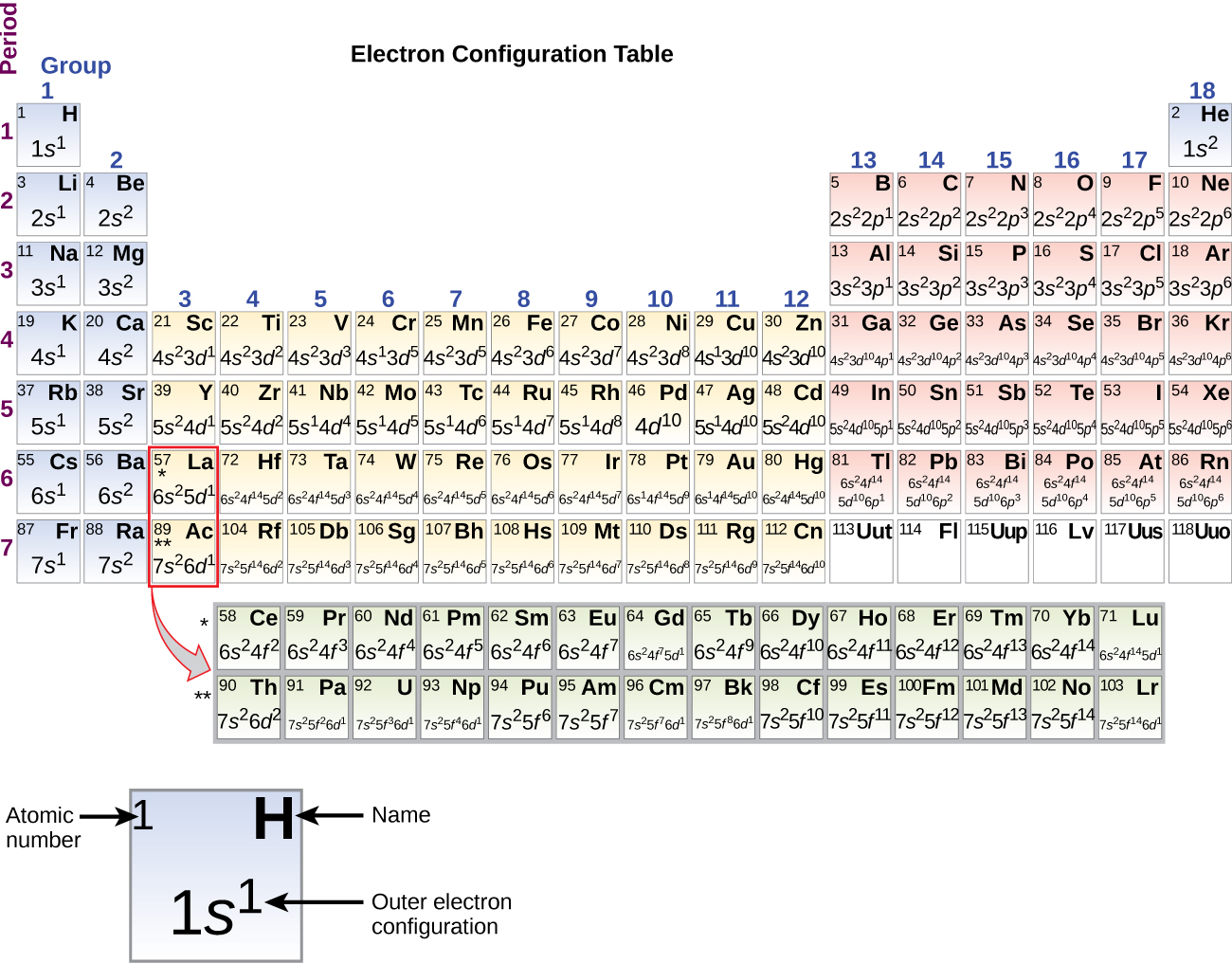
With 10 electrons you should note that oxygen's electron configuration is now exactly the same as Neon's. This would add 2 electrons to its normal configuration making the new configuration: O 2- 1s 22s 22p 6.
ATOMIC ORBITALS AND ELECTRON CONFIGURATION FULL
If you need to write the full electron configuration for an anion, then you are just adding additional electrons and the configuration is simply continued.įor example, we know that Oxygen always forms 2- ions when it makes an ion. Special CasesĬonfigurations of ions present a special case of electron configuration and also demonstrate the reason for the formation of those ions in the first place. So Oxygen's electron configuration would be O 1s 22s 22p 4. Based on the order of fill above, these 8 electrons would fill in the following order 1s, 2s and then 2p. Looking at the periodic table, you can see that Oxygen has 8 electrons. The symbols used for writing the electron configuration start with the shell number (n) followed by the type of orbital and finally the superscript indicates how many electrons are in the orbital. Just like the quantum numbers themselves this order was determined by calculation and is summarized by the following chart: This is referred to as the Aufbau principle. The order in which electrons are placed into the orbitals is based on the order of their energy. BUT what we haven't discussed is how these orbitals get filled.the order of fill. So based on what we know about the quantum numbers and using the chart above, you need 2 electrons to fill an s orbital, 6 electrons to fill a p orbital, 10 electrons to fill a d orbital and 14 electrons to fill the f orbital. Here is a summary of the types of orbitals and how many electrons each can contain: What we will do now is place those electrons into an arrangement around the nucleus that indicates their energy and the shape of the orbital in which they are located. As we learned earlier, each neutral atom has a number of electrons equal to its number of protons. Electron ConfigurationĮlectron configurations are the summary of where the electrons are around a nucleus.

In this lecture we continue the discussion of Quantum Numbers and their use in Electron Configurations as well as the relationship of electron configuration to the periodic properties of the elements. The content that follows is the substance of General Chemistry Lecture 26. Electron Configurations Electron Configurations


 0 kommentar(er)
0 kommentar(er)
